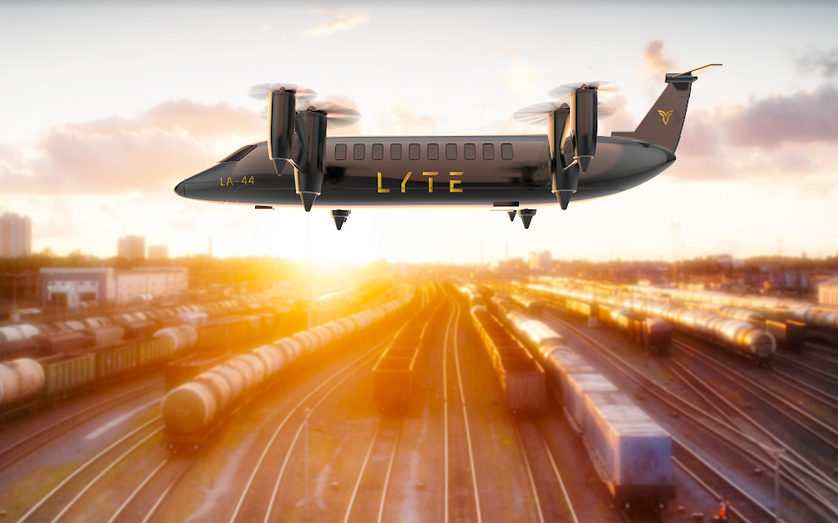Lyte Aviation unveiled its 40-seat SkyBus and SkyTruck (hybrid) ADAVe (eVTOL) programme on 23 March. Intended to carry loads of up to 4.5t, both aircraft are based on the Fairey Rotodyne concept and are expected to adopt a mixed powerplant combining turbo engines and electric motors.
SkyBus and SkyTruck
Lyte Aviation unveiled its 40-seat SkyBus and SkyTruck (hybrid) ADAVe (eVTOL) programme on 23 March. Its LA-44 SkyBus and complementary SkyTruck cargo variant, designed around a 4.5 tonne payload, are the result of three years of research and development. The result is a different kind of vertical take-off and landing vehicle, designed to be five times more fuel-efficient than current helicopters, according to its designer. The SkyBus will have a range of 1,000 km and a top speed of 300 km/h, using mainly technologies available today. The LA-44 is a hybrid electric tandem tilt-wing aircraft, which will disrupt other futuristic next-generation designs. A full-scale prototype is planned within 24 months. LYTE Aviation's SkyBus features two separate propulsion systems, one electric and powered by hydrogen fuel cells, the other turbo-engine powered by jet fuel / SAF.
Rotodyne for inspiration
"The use of turbo engines will probably remain inevitable for the foreseeable future," explains Freshta Farzam, founder and CEO of Lyte. So, in order to achieve useful and acceptable ranges for the company, as well as a faster time to market, we opted for a hybrid, partly electric VTOL. "My personal inspiration for this operating concept came from the [Fairey] Rotodyne gyroplane [whose design dates back to the] 1950s," she added. The Rotodyne had the same flying cargo airframe, further development of the aircraft was halted due to a restructuring of the British aviation industry, a lack of suitable engines with sufficient power and finally funding that was cut due to the economic recession in Britain at the time.
Turboshaft engines and hybridisation
LYTE Aviation's LA-44 model is powered by four conventional turboshaft engines, running on sustainable aviation fuel (SAF), supplemented by four electric wingtip motors for control and stability, powered by hydrogen fuel cells. "Conventional turboprop engines, which are very reliable, are the best option for our aircraft programme at the moment, with the aim of operating and refuelling virtually anywhere with the current infrastructure. With the continued evolution and planned investment in global infrastructure, including vertiports, power sources (SAF and green hydrogen) and generators, the ambition would be to become fully hydrogen electric in the future," adds Freshta Farzam.
4.5 tonnes payload
"The SkyTruck will be designed to deliver time-sensitive cargo faster from one point to another, without relying on airstrips, to meet the speed requirements of the onshore and (especially) offshore industry," continues Freshta Farzam. In addition, the LA-44 will be designed to operate in other difficult operational conditions and (in the absence of land-based infrastructure) in remote areas. It will have a lower payload capacity: a payload of 4.5 tonnes and a gross weight of 17 tonnes.

